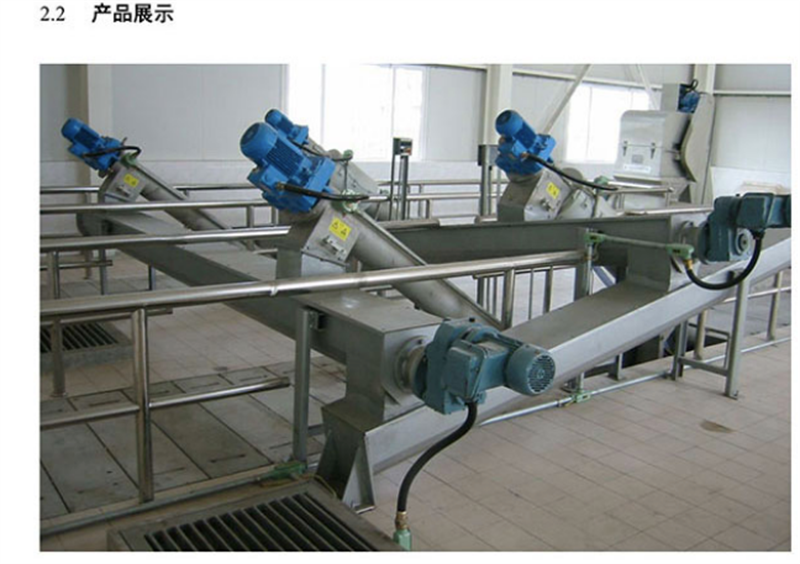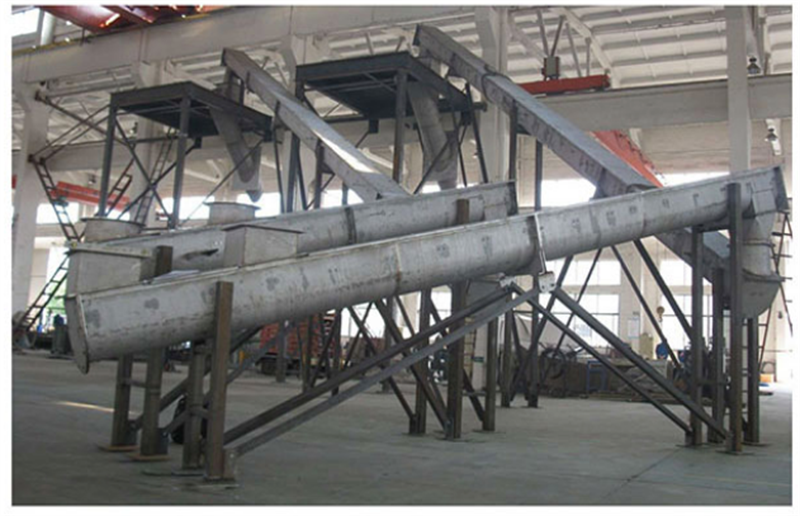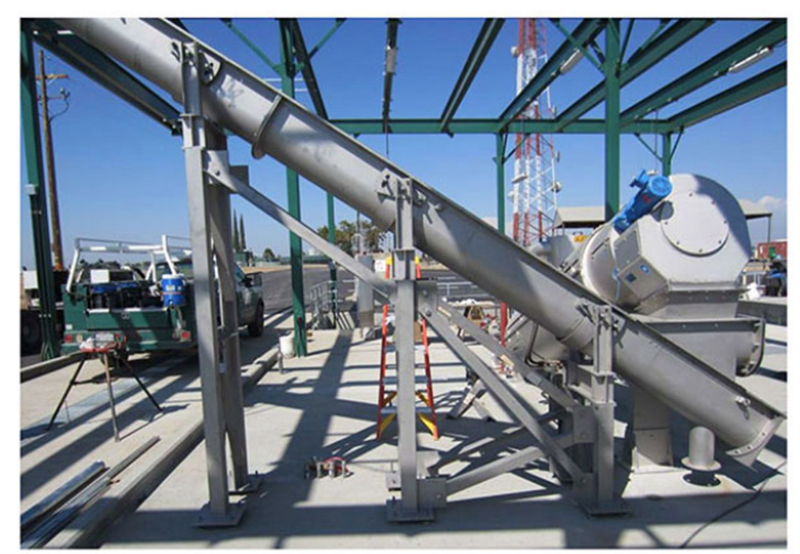Editor's Note: Currently, in wastewater treatment plants, the most common solid conveying equipment we see is undoubtedly the shaftless screw conveyor. Examples include conveying screenings after the grit removal screens and transporting dewatered sludge from dewatering machines in the sludge dewatering room. As a solid conveying device, the shaftless screw conveyor has been widely adopted in the environmental protection industry. This issue compiles relevant knowledge about shaftless screw conveyors for reference. Feedback and corrections from readers are welcome.
Brief Introduction to Equipment Principles
1.1 Working Principle
It utilizes rotating spiral blades to push material forward for conveyance. The material's own weight and the frictional resistance between the conveyor casing and the material prevent the material from rotating along with the screw conveyor blades.
Compared to traditional shafted screw conveyors, the shaftless screw conveyor uses a flexible full-steel screw without a central shaft to push material. This design gives it the outstanding advantage of strong anti-winding properties.
1.2 Classification
Screw conveyors are classified by transmission form into: Shafted Screw Conveyor and Shaftless Screw Conveyor.
By external shape, they are classified into: U-shaped Screw Conveyor and Tubular Screw Conveyor.
Based on the direction of material movement: Screw conveyors are divided into two main types: Horizontal Screw Conveyor and Inclined Screw Conveyor.
This time, we will mainly use the shaftless screw conveyor as an example for explanation.
1.3 Main Components
A shaftless screw conveyor typically consists of five main parts: the conveyor body, inlet and outlet ports, drive unit, transmission mechanism, and support legs.
The spiral blades come in three forms: Solid Spiral Surface, Ribbon-type Spiral Surface, and Blade-type Spiral Surface. Among these, the blade-type spiral surface is relatively less used, mainly for conveying highly viscous and compressible materials. This spiral surface type, while performing conveying tasks, simultaneously achieves functions like mixing and blending the material.
1.4 Applicable Industries
Shafted Screw Conveyors are suitable for non-sticky dry powder materials and small granular materials (e.g., cement, fly ash, lime, grain, etc.).
Shaftless Screw Conveyors are suitable for conveying granular and powdered materials, wet and pasty materials, semi-fluid and sticky materials, materials prone to winding and clogging, and materials with special sanitary requirements (e.g., sludge, biomass, garbage, slag, etc.).
2.2 Product Showcase



3. Product Features
Excellent Environmental Performance. Fully enclosed design and easily cleanable screw surface ensure the conveyed material is not contaminated and leaks are prevented.
High Capacity. Conveying capacity is 1.5 times that of a shafted screw conveyor of the same diameter.
High Torque, Low Energy Consumption. Discharge outlet does not clog.
Long Conveying Distance. Single unit conveying length can reach 40-70 meters.
Compact Structure, Space-saving, Aesthetic Appearance, Simple Operation, Economical and Durable.



